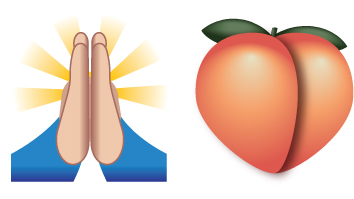7 Designing emojis
Given that meaning is conveyed through the way the different symbols look, the design of emojis is obviously a very important element in how they work as a communicative system. In the next activity you’ll hear from Gedeon Maheux, co-founder of the graphic design company The Iconfactory. Gedeon has been involved in the design of emojis for companies such as Twitter and Facebook, and talks here about what goes into their creation.
Activity 4 Gedeon Maheux
Listen to the interview below in which Gedeon Maheux discusses some of the issues around designing emojis and the impact they are having on society. In the interview, he mentions the Unicode Consortium, a regulatory group who decide on what becomes an emoji and what doesn’t. The Consortium also gives a rough template of what all the emojis should look like.
As you listen to the interview, answer the following questions:
- In Gedeon’s view, why do people use emojis?
- What leeway does his company have in designing emojis?
- What evidence does he give of the ways in which people use communicative resources for their own ends?
Discussion
Gedeon mentions the speed with which emojis can be used to communicate ideas. And why this makes them such a convenient form of communication. He also mentions that they are particularly effective at conveying emotion, as we discussed above and that this is certain to be a factor in their popularity. In drawing up the designs, his company has to adhere to the Unicode Standard so that everyone can recognise what each emoji is supposed to represent. This reflects a truth about language in general. A symbol - whether it’s a visual image or a word – needs to be mutually understood, otherwise communication breaks down. Gedeon’s company does, however, have a certain leeway in terms of the angle, lighting and colouring of the emojis. But despite the efforts he and his team make in creating clear, engaging pictures, there’s still the chance that people will use them in ways that weren’t intended or anticipated. He gives the examples of the way in which people use the peach emoji and the high-fives emoji to mean bottom and praying respectively. This again reveals an important truth about language in general – people will always use and adapt its resources for their own ends.


